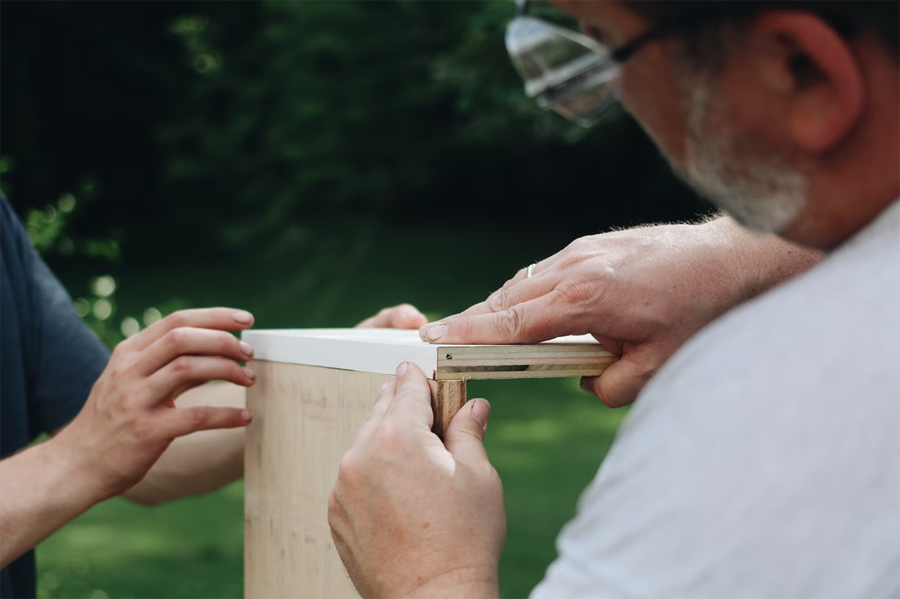Knowing how to repair a mosquito net, sew a dress, embroider a curtain, repaint the walls of the house, change a faucet.
To carry out any DIY activity you need various types of tools.
For household tasks, we start with the classic toolset, comparable to a first aid kit.
The indispensable contents consist of an extensible meter, a hammer, a set of hexagonal wrenches and one set of screwdrivers, a hacksaw, a pair of pliers scissors and a cutter.
This is what can be useful to try to intervene in an emergency or if it is to hang a painting, tighten a bolt or screw, replace a handle, but there are plenty of opportunities to enrich your equipment.
All it takes is for the picture to be mounted to have a discrete weight and you already have to drill holes in the wall to insert an expansion plug: so you need a drill and a set of tips.
You soon discover that a cordless screwdriver with bits is much more useful and less tiring than screwdrivers when you are assembling in sequence; that screwdrivers for mechanical use are not suitable for electrical work because they must be insulated.
Depending on one's skills and the type of DIY one intends to undertake, the equipment should be gradually completed not only with manual and electric tools dedicated to the purpose, but also with consumables to have on hand: screws of various types and other small parts, adhesive tape, glue, sandpaper and so on.
Especially with regard to equipment, you will learn that it is not convenient to buy tools at too low prices, otherwise you will have to choose poor quality.
In fact, if in the moment in which you need it, the tool abandons us, the work stops and you are forced to waste time in order to purchase a similar tool of better quality that we could get right away, without additional expenses.
For the same reason, even the storage of tools should be taken care of, cleaning them after use and placing them in a rational and orderly manner to have them ready for the next use.
Do-it-yourself is not only repairing and fixing, but it can also be understood as a creative activity that also passes through the reuse and recycling of objects.
In DIY nothing is thrown away: everything that is apparently unserviceable can be used to integrate new projects or for a purpose other than that for which it was conceived.
In the vocabulary of DIY, the entry "piece of waste" refers to an infinite number of possible applications, it is more realistically a leftover that can provide the basis for another project.
With a little ingenuity and patience, it's amazing to realize what you can get from seemingly unserviceable objects.
For example: how many kitchen cabinets with no commercial value, perhaps found at flea markets, can be salvaged? All it takes is a coat of paint to use them as lab containers, maybe they still have working hinges or magnetic closures...
In short, whether we fix, create, recycle, the work we get is done by us, you know what satisfaction?
Why DIY is much more than just a hobby
The DIY as well as being a great pastime that engages body and mind brings with it many psychological benefits not to be underestimated. Let's see them together!
The World Health Organization has issued a statement informing that after 2020 anxiety will be the second most common disease in the world. Given the current situation, psychologists recommend DIY and manual activities as simple remedies to combat anxiety and stress.
The importance of devoting oneself to DIY, can be seen mainly due to the fact of being able to engage in a creative hobby or manual activity that make us "disconnect" from what we consider a routine.
The DIY, in addition to forming a discrete manual skills and a great wealth of experience, is able to calm and improve the mood, increase their self-esteem by stimulating creativity and mind. It promotes hand-eye coordination, spatial perception and fine motor skills.
DIY is able to sharpen our senses and strengthen many motor skills, which in fact contribute to increased concentration by focusing attention on the correct execution of the task.
In conclusion, let yourself be carried away in your passions and remember that it can not be called only a pastime an activity that can bring with it so many positive aspects.


